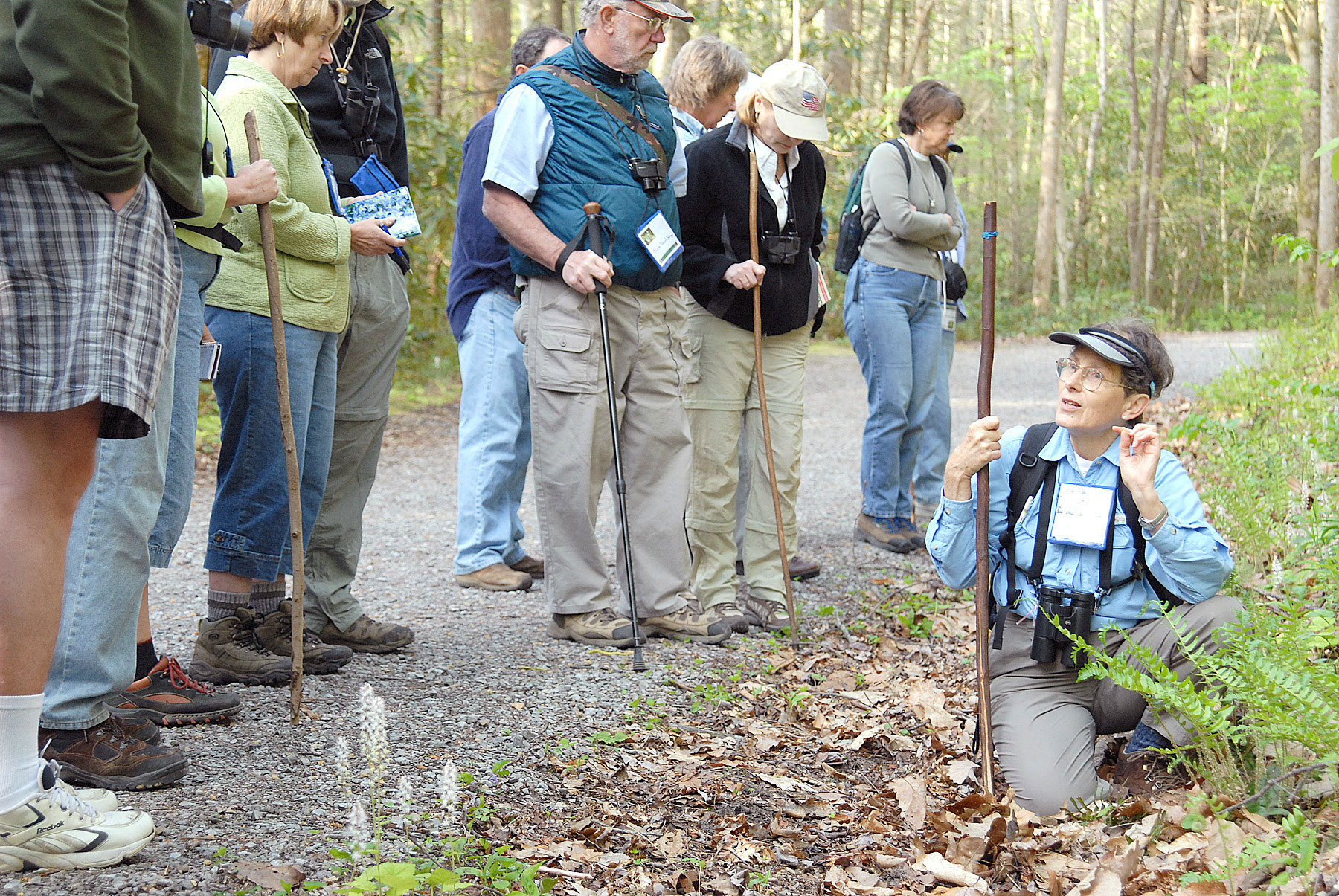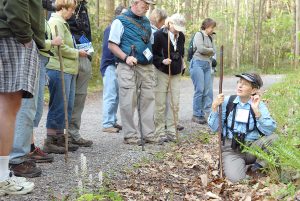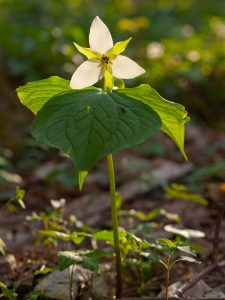
Soon the long, sultry days of summer will be behind us, and autumn will be on the horizon. But some nature lovers in the Smokies may already be enthusiastically awaiting spring and a decades-old event that celebrates the remarkable diversity of wildflowers found in our region.
For 72 years, the Spring Wildflower Pilgrimage in Great Smoky Mountains National Park has brought expert field biologists and the interested public together to enjoy nature and educate citizens about the importance of biodiversity and conservation. Through professionally guided tours, engaging speakers, and community science programs, participants can expand their knowledge of the incredible wealth of flora and fauna found in GSMNP.

The Pilgrimage is the longest running event of its kind in the country and among the largest in terms of attendance, leaders, and programs. What began in 1951 as a tourism-driven garden club event with only 11 programs and fewer than 50 participants has developed into a major expo presented by the Association of Southeastern Biologists to educate on biology, ecology, conservation, and preservation and attracting scientists, botanists, and nature lovers across the United States and several other countries. In recognition of its long history of partner collaboration and public education, the Pilgrimage was awarded the Outstanding Public Engagement award by the Public Lands Alliance in 2019.
During its more than seven decades of existence, the Spring Wildflower Pilgrimage has offered the public the unique opportunity to enjoy nature up close and learn about the natural world with the guidance and expertise of some of the most qualified field biologists in the eastern US. In recent years, Pilgrimage plans were altered somewhat by the COVID-19 pandemic, but organizers found creative ways to carry on with the mission and spirit of the event.
“In 2020 and 2021 we had virtual ‘pilgrimages’ through the iNaturalist app,” said Dr. Joey Shaw, professor of the Department of Biology, Geology, and Environmental Science at the University of Tennessee, Chattanooga, and chair of the Pilgrimage organizing committee. “Both of those years we lined up biologists, ecologists, and conservation workers to help people on iNaturalist identify and learn about the organisms in their backyards, neighborhoods, and nearby open natural areas.”

Shaw said these were among the most meaningful Pilgrimages “because during that time of fear for our futures and families, uncertainty, and isolation, ‘pilgrims’ from Alaska to Spain and New England to southern California reunited via iNaturalist in the shared interest of exploration and education. Pilgrims and leaders invited one another into their own backyards to share plants, to their porchlights to study evening insects, and to their morning coffee to share bird songs. The power of Pilgrimage reunion was especially powerful during those times.”
In addition to creating these Virtual Spring Wildflower Pilgrimage experiences, organizers also introduced the Virtual Fall Wildflower Pilgrimage those same years. In April 2022, eager participants gathered for their first face-to-face event in two years, supported by a partnership of the University of Tennessee at Chattanooga, the Association of Southeastern Biologists, the National Park Service, and Arrowmont School of Arts and Crafts and sponsored by the Southern Appalachian Botanical Society and Great Smoky Mountains Association.
Now having weathered a pandemic, the Pilgrimage continues to attract nature lovers back to this enduring event and introduce new participants to the wonders of spring in the Smokies. Plans are set to gather in person again to celebrate the 73rd Annual Spring Wildflower Pilgrimage, April 26–29, 2023.

Pilgrimage attendees can choose programs from a variety of activity levels including instructional workshops, short rambles, hikes, and more strenuous all-day excursions in the national park. And while wildflowers may be the main event, program topics are as diverse as the Smokies’ ecosystems—showcasing ferns, mosses, liverworts, fungi, lichens, birds, bats, owls, bears, elk, snakes, amphibians, and insects and delving into topics including plant ecology, fire recovery, and invasive species.
Other areas of interest such as cultural and natural history, photography, sketching, and nature journaling invite pilgrims to appreciate many other aspects of this rich and preserved landscape. Additionally, community science initiatives—including using the iNaturalist app—allow participants to contribute valuable and lasting data to assist scientists and resource managers at the national park.
“The Spring Wildflower Pilgrimage has been providing unique public learning opportunities for nearly seven decades,” said GSMNP entomologist Becky Nichols, who leads programs during the event. “Participants can choose from among an increasingly broad array of programs featuring valuable information on biodiversity within the park and region. By educating the public, we inspire the next generation of stewards, which is critically important for natural areas now and in the future.”
Dr. Joey Shaw will speak about the Spring Wildflower Pilgrimage’s 72-year history of public education in the Smokies at the next Science at Sugarlands virtual program. Science at Sugarlands is hosted by Discover Life in America (DLiA) and will be held via Zoom at 1 p.m. on Friday, September 16. Registration for the free online event is open at dlia.org/sas.
Subscribe to get the latest posts sent to your email.
The Great Smokies Welcome Center is located on U.S. 321 in Townsend, TN, 2 miles from the west entrance to Great Smoky Mountains National Park. Visitors can get information about things to see and do in and around the national park and shop from a wide selection of books, gifts, and other Smokies merchandise. Daily, weekly, and annual parking tags for the national park are also available.